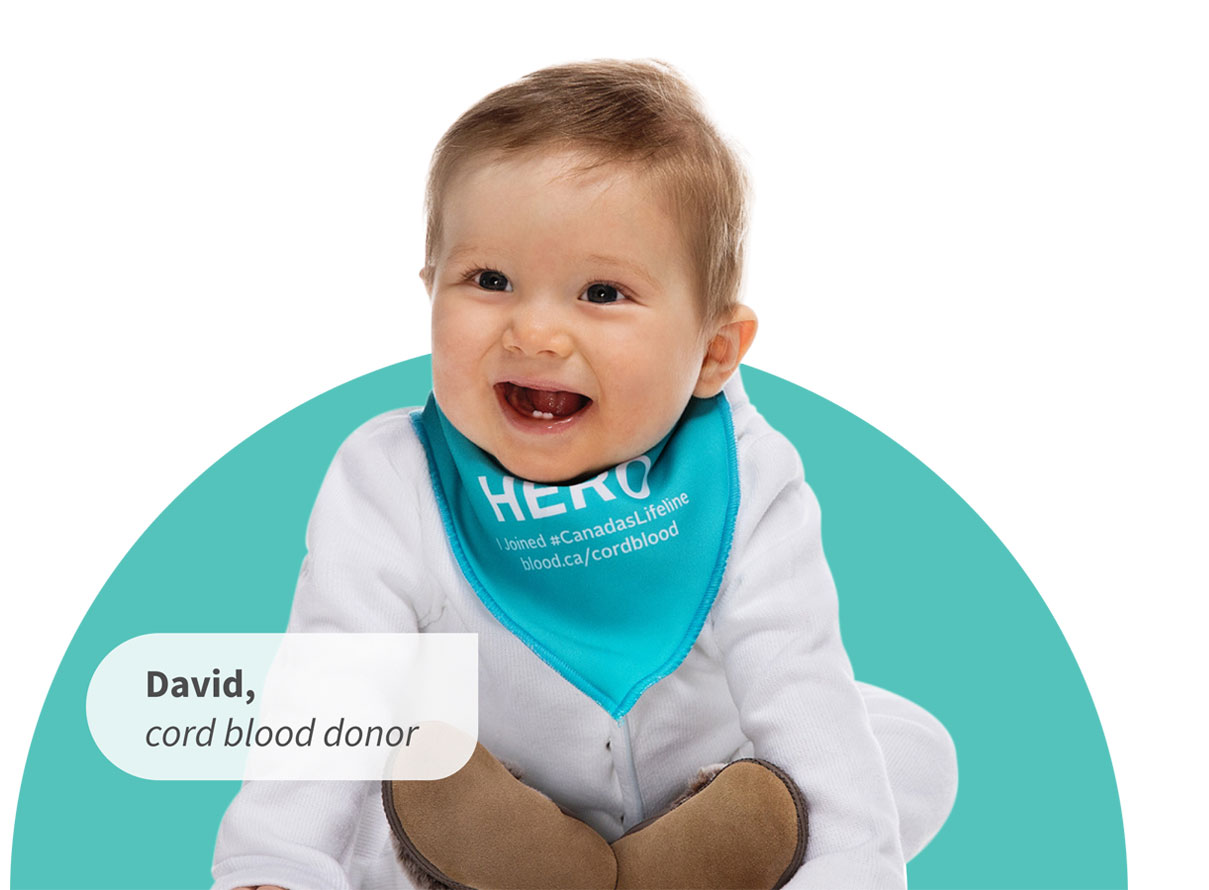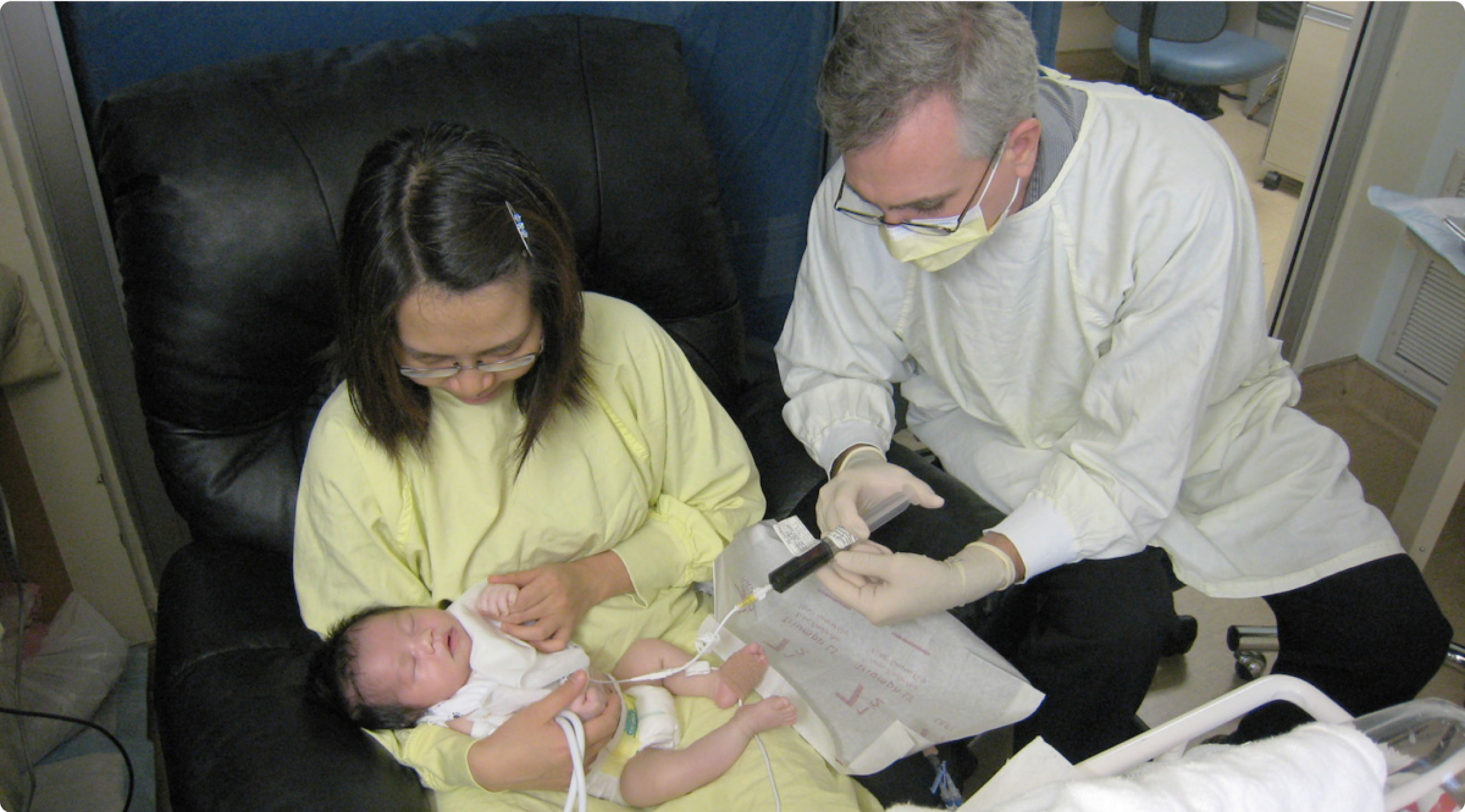Register to donate cord blood
Giving birth in Canada? Register today to donate cord blood after your delivery.
What to expect on your cord blood donation journey

Confirm your eligibility
To be eligible to donate cord blood, you must:
- Be in good general health.
- Be 18 years or older.
- Deliver after 34 weeks gestation.
- Be pregnant with one baby (not twins or triplets).
- Be free of infectious diseases (such as HIV or hepatitis).
- Have no history of cancer or blood disorder requiring chemotherapy, in either biological parent.
- Have not used a donor egg, sperm or surrogate for this pregnancy.
- Be delivering at one of our four participating hospitals.
Speak with your healthcare provider to discuss public cord blood donation. If you have more questions regarding eligibility, contact 1 888 2 DONATE (1-888-236-6283) or email cordblood@blood.ca.

Register online
Before your expected due date, complete your online registration for cord blood donation.
After submitting your registration, you’ll receive an email from Canadian Blood Services confirming that your registration has been received along with a copy of your signed consent form (check your spam folder). No further action is needed until your delivery day.

Donate cord blood
When you arrive at the hospital:
- Let your birthing team (nurse/midwife/physician) know about your intent to donate to the Canadian Blood Services' Cord Blood Bank.
- Cord Blood Bank staff at the hospital will have your consent form on file.
After the safe delivery of your baby:
- Your placenta will be provided to a Cord Blood Bank team member to collect the cord blood in a designated room.
- Cord Blood Bank staff are not present in your room at the time of delivery.
- No blood is taken from your baby.
- The placenta is returned to the hospital after cord blood collection is complete.

Receive preliminary test results
After collecting the cord blood, a small amount will be tested in hospital to determine if it has enough stem cells to qualify for storage in the Cord Blood Bank. A Cord Blood Bank team member will follow-up to inform you of these preliminary test results.
If your cord blood unit qualifies for storage, additional information and testing will be required.

Get your baby hat!
You and your baby have made all the difference! Cord blood units donated to public cord blood banks are available to any patient who is a suitable match either in Canada, or worldwide.
As a token of our appreciation for your commitment to saving lives, your little hero will receive a commemorative baby hat.
Donate cord blood
Expectant parents have the unique opportunity to donate cord blood at select hospitals across Canada.
What happens after your donation
If the cord blood unit qualifies
If the cord blood unit qualifies for banking, a member of the collection team will visit you before you leave the hospital to collect some additional information including:
- A second consent.
- A blood test (only from birthing parent).
- A health assessment questionnaire.
- Review of the medical chart (baby and birthing parent).
Your second consent and blood test must be received before you are discharged from the hospital or your cord blood donation will not be eligible for banking.
If the cord blood unit does not qualify
If the cord blood unit does not qualify for banking, it may be used for other uses (e.g. training and quality control, product improvement) or discarded. Or, with your consent, can be donated to our research program.
Donated cord blood units that are transferred to Canadian Blood Services’ Cord Blood Research Program will only be distributed to ethically approved research studies if it meets all of the following requirements:
- The collected cord blood is unsuitable for banking or transplantation.
- The birthing parent has given consent for the cord blood to be used for biomedical research.
- The collected cord blood meets certain research criteria.
Thanks to donated cord blood, Celia’s newborn overcame a rare inherited illness
Just 14 weeks into her pregnancy, Celia learned that her second child would be born with the same rare, life-threatening disorder that she had lost their first child to. Thanks to the cord blood bank, Justin received a successful stem cell transplant at three weeks old and is now thriving as a healthy 15-year-old student.
“I always think about the cord blood donor who saved my life and I know I may never meet them,” says Justin, who loves to construct Pokémon characters with LEGO. “But I’m thankful that I am alive to be with my parents and that I can see how beautiful this world is.”


